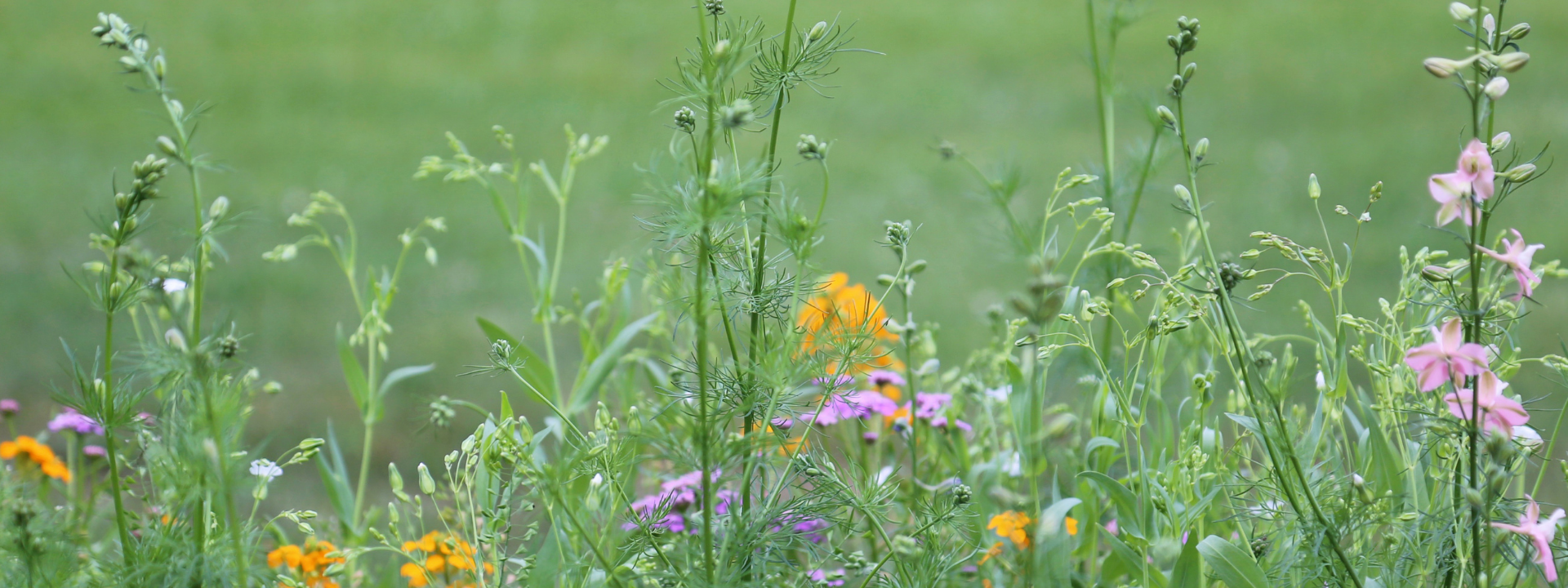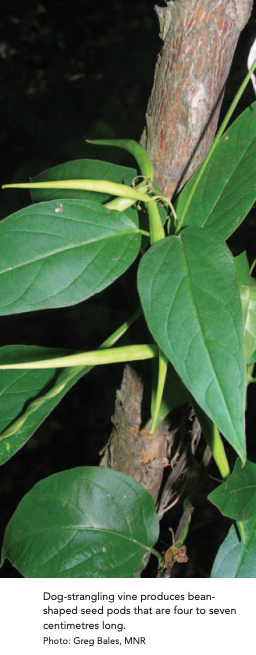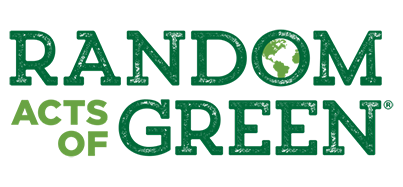Turn your green space into a pollinators paradise with these tips!
Regardless of your gardening prowess, we’ve detailed here a few easy-to-implement tips to turn your green space into a wasp-wonderland, an ant-euphoria, a bee-topia … you get the gist!
Firstly, what exactly are pollinators?:
Pollination is the act of transferring grains of pollen containing reproductive cells between male and female flower parts.
Of the hundreds of thousands of flowers in the world, including flowering shrubs and trees, more than 80 percent of them require assistance for pollination, whether it is help from an insect, bird, or mammal. – Hence the absolute need to support our pollinating friends!
Leave the leaves!
As tempting as it may be to clean up, consider leaving your leaves, stems and plant stalks overwinter as ground cover. Don’t rake until temps are consistently above 10 degrees,

Countless other invertebrates require this ground-cover including spiders, snails, worms, beetles, millipedes, and mites. These small critters help support others in the ecosystem including chipmunks, turtles, birds, and amphibians.
Don't dispose of debris!
As with above, but on a larger scale:
If you’ve had a tree felled, and you have the space, leave some of the stump and branches stacked or bundled around your yard.
This provides great nesting space for pollinators.
If you’re handy, build a bee or insect hotel.
Constructing one is a great way to get your kids involved in learning about biodiversity!
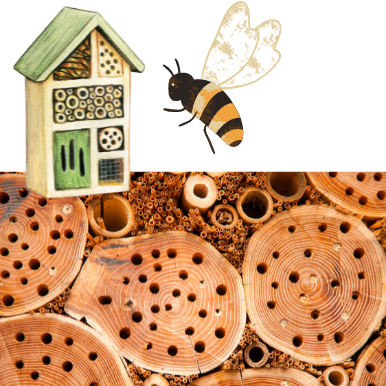
Include a water source
Bugs get thirsty, too.
Pop a water station in your green space.
This can be as simple as an old takeout container with some wine corks or marbles in it (something for them to clamber and crawl over).
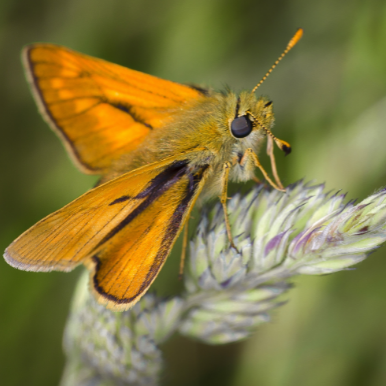

Author
Stephanie Ward
Stephanie started her journey towards a sustainable lifestyle young: at the age of 12, she started a ‘compost bin’ in a margarine container — and left it for her mum to find under the sink many weeks later … Needless to say, her eco-skills have improved since then! A vegan of 10+ years, a staunch animal welfare advocate, and an avid recycler, you’re most likely to find her on a hike, or in the garden.
Join Our Email Community
Gain exclusive access to green trends, tips, and tricks when you sign up for our free newsletter. Enter your email to join our community of changemakers!
Hummingbirds!
Help our teeny-tiny feathered friends by planting Phlox, Bee-Balm, Cosmos, Geraniums and Petunias. Shrubs like Hibiscus and Honeysuckle are also beneficial.
Phlox is fantastic as it’s easy to grow and easy to divide later down the line (share some with your neighbours!).
Bee-Balm can be dried and made into tea, and Cosmos can be grown in planters.
More pollinator planting tips are on their way!
A fun fact: Hummingbirds are attracted to reds, pinks, oranges and yellows!
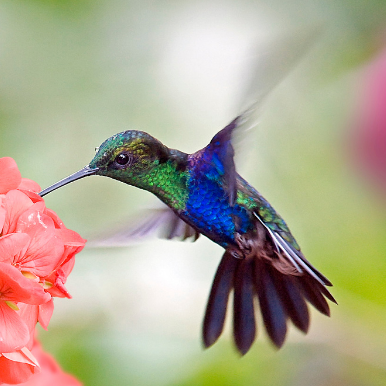
Our members at The Birdhouse Nature Store wrote a fantastic blog on the how to’s of Hummingbird feeders. One important tidbit:
“Feeders MUST be cleaned regularly, every 2-3 days, especially in the heat of summer. There is potential bacteria on the beaks of the hummingbirds that can transmit disease to other hummingbirds.”
Read the full blog here.
Don't forget the bats!
Bats are pollinators, too!
Bats can eat up to 1,200 mosquitos an hour. If you can, don’t zap the skeeters. Let our bat-friends dine in ease.
- Install a bat house.
- Use bat-safe bulbs for outdoor lighting. Bright lights can cause confusion.
- Protect the trees in your city. They help subdue the effect of artificial light on city-slickin’ bats.
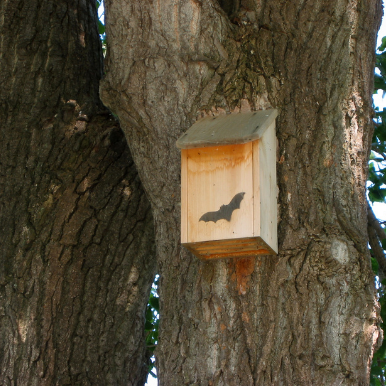
Would you ditch your lawn?
Would you give up your turfed terrain?
Did you know that lawns were once viewed as an indicator of wealth?
Traditional turf requires a minimum of one inch of water per week during the growing season and each 1,000 sq. ft. of lawn requires 624 gallons of water to receive one inch of water? Use the Eco-Lawn calculator here to find out how much water you’re using.
Would you give up some of your lawn in exchange for a habitat for pollinators?
Pollinator lawns are becoming increasingly more popular. They use less water and require little-to-no maintenance (less mowing – huzzah!).
What exactly is a pollinator lawn?
A pollinator lawn is a nod to the native environments pollinators would regularly exist in. It will provide nutrition to insects, and shade to burrow and forage and cover from predators.
Seed packs for pollinator lawns can consist of mixed micro-clovers and low-growing wildflowers.
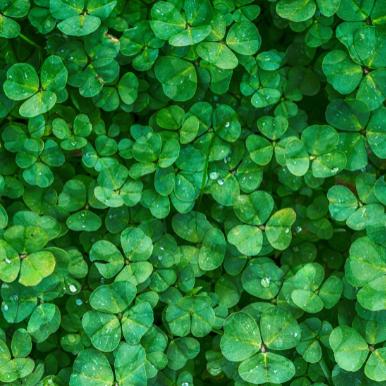
Things you can grow:
– Our friends at Eartheasy put together a whole spring-planting blog post: 5 Early Season Plants to Attract Pollinators to Your Garden which you can read here. One great tip we recently received from the Eartheasy team: “Bees and birds love anise hyssop. It’s easy and inexpensive to grow, blooms a long time, and is great in homemade tea. “
– In addition to the above, if you’re limited spatially, consider a container garden. Sunflowers and the Bumblee Bee Wildflower Blend are fantastic for bees (and hummingbirds) and you can grow them in large containers. Learn more here.
– Don’t forget the beetles! You can buy blends specifically for our hardshell hero’s.
– Grow some veggies. Did you know that regular visits from the right kind of bee can improve tomato pollination? I myself have had great success growing tomatoes in a pot on my balcony!
Bonus Green Planting Tip:
Reuse those takeout containers for seed starting.
“Today I decided to reuse a bunch of fast food containers to plant my microgreens for next month.
They are the perfect size and depth for small shoots and with a couple of holes in the lid, it keeps the humidity in, creating a greenhouse effect.
I used fast-draining soil due to the lack of drainage holes in the bottom.
Thank you to our Green Spotted Volunteer, Camille Knight for this submission.

Things you should remove:
We hope that you enjoyed this speedy pollinator rundown!
Would you like some more gardening tips?
Check out our blog post on Upcycled Gardening at the button below.

